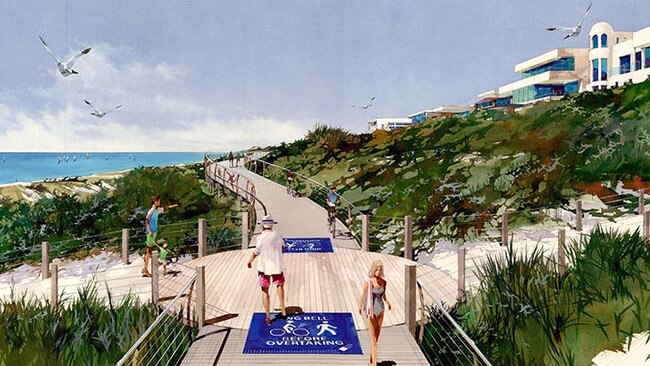State Government threat to pull $6.5m coast park funding
MILLIONS of dollars pledged for a stretch of the long-awaited 70km coastal path could be withdrawn by the State Government after a stalemate brought the project to a standstill.
- West Beach plans hit wall: Legal action threat to halt $7.4m path
- Supreme Court rules unlawful Charles Sturt Council’s coast park plan
- Ratepayers left with $1m legal bill over coast path
MILLIONS of dollars pledged for a stretch of the long-awaited 70km coastal path through Charles Sturt Council could be withdrawn by the State Government because of a stalemate that has brought the project to a standstill.
The threat to take back $6.5 million was made by Infrastructure Minister Stephan Knoll in a letter to Wild Endangered Dunes Group chairman Geoffrey Reed — a known agitator against the stretch of path that would extend from Grange to Semaphore Park.
In the letter, Mr Knoll — who has since backed away from the threat — wrote that the government would have to work with the council to find an alternative solution for the project — which was last year the subject of a Supreme Court case — given the terms of the grant had expired.
“Should the State Government and the council be unable to agree on a suitable revised implementation program, I will then take the appropriate steps to have the funding returned to the State Government,” the letter read.
But the government last week flatly denied the assertion it would reclaim the money.
In a statement to the Portside Weekly, a government spokesman said: “The funding is currently sitting in the City of Charles Sturt’s bank account.
“The State Government remains committed to delivering this coastal path and is continuing to work with the council to finish the path as soon as possible for the local community to enjoy.”
Charles Sturt chief executive Paul Sutton confirmed the council was in “ongoing” discussions with the government about a new plan, but he was not aware the funding could be removed.
He said the council had to give further consideration to the possible environmental impacts of the path through the Tennyson area, which would be dealt with after this week’s council election.

Councillor Robert Randall, a long-time proponent of the path, agreed the letter constituted a “threat”.
“If the government is saying they’re not going to take the money, that’s good news but I’m sure we can agree with a plan to implement the path and the government will support it on that basis,” Cr Randall said.
“There are obviously those along there who don’t want it but there are those who’ve agreed to a compromise.
“My hope is that the community actually asks the candidates how they could vote if it came to (the) council because the wider community certainly wants it.”
Grange resident Pascale Quester, who has participated in workshops and consultation on the path, said it was “appalling” that the project had been held up by residents.
“The concept is of an unbroken coastal path … and even if we just don’t build 2km in the middle, then the whole project has been a huge waste of money,” Dr Quester said.
“It’s a trumped up campaign for the single purpose of stopping people from walking in front of their house, on what is not their land.”
The Planning, Transport and Infrastructure Department has been working with six councils to complete the planned continuous coastal path.
The government has so far spent $43.3 million building 45km of the trail.
The Coastal Ecology Protection Group last year took Charles Sturt to court to block construction of a path and boardwalk across a environmentally sensitive dune area. This has forced it to reconsider plans.
